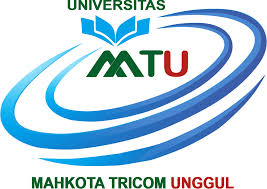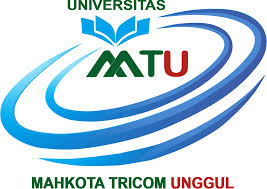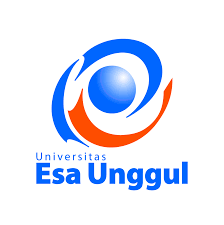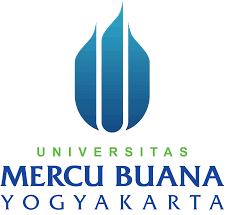University Students' Attitudes and Perceptions on Learning English with Mobile Apps
DOI:
https://doi.org/10.55927/fjsr.v3i8.10959Keywords:
Mobile-Assisted Language Learning, Student Perceptions, English Language AppsAbstract
This study investigates university students' attitudes and perceptions toward using mobile applications for English language learning. Conducted at Universitas Negeri Yogyakarta with 43 master's students, the research employed a survey to assess various aspects of mobile app usage. Results indicate a generally positive view, with high engagement in listening and multimedia activities, underscoring the effectiveness of mobile apps in these areas. However, there are concerns about content accuracy and the need for improved support for writing skills. Students found mobile apps convenient and enjoyable, suggesting their significant potential to enhance language education. Recommendations include integrating mobile apps more systematically into curricula, focusing on features that support writing skills, and addressing concerns about information reliability. Future research should explore long-term impacts, effective integration strategies, and the role of specific app features in language development
Downloads
References
Agustina, R., Waloyo, E., & Harsiati, T. (2022). Indonesian Students' Perceptions on the Use of Mobile Applications for English Learning. Journal of Educational Science and Technology (EST), 8(1), 23-32. https://doi.org/10.26858/est.v8i1.25516
Al-Emran, M., Mezheyev, V., & Kamaludin, A. (2016). Towards sustainable acceptance of mobile learning technology: Students' perspectives and attitudes. Journal of Mobile Trends and Practices, 7(1), 1-23.
Arrosagaray, M., González-Peiteado, M., Pino-Juste, M., & Rodríguez-López, B. (2019). A meta-analysis of the attitudes towards ICT in STEM students. British Journal of Educational Technology, 50(5), 2171-2186. https://doi.org/10.1111/bjet.12853
Barrot, J. S. (2016). Using Facebook-based e-portfolio in ESL writing classrooms: Impact and challenges. Language, Culture and Curriculum, 29(3), 286-301. https://doi.org/10.1080/07908318.2016.1143481
Baruah, T. D. (2012). Effectiveness of Social Media as a tool of communication and its potential for technology-enabled connections: A micro-level study. International Journal of Scientific and Research Publications, 2(5), 1-10.
Bogardus, E. S. (1931). A social distance scale. Sociology and Social Research, 17, 265-271.
Chen, K. T. (2013). An overview of meta-analysis on attitudes towards computers. In T. Plomp & N. Nieveen (Eds.), Educational design research – Part B: Illustrative cases (pp. 357-387). SLO.
Chinnery, G. M. (2006). Emerging technologies. Going to the mall: mobile assisted language learning. Language learning & technology, 10(1), 9-16.
Cohen, J., Vincent, J. B., & Jor'dan, J. T. (2022). Assessing student perspectives on the efficacy of learning technologies: A mixed-methods study. Educational Technology Research and Development, 70(1), 23-52. https://doi.org/10.1007/s11423-021-09997-3
Conole, G., de Laat, M., Dillon, T., & Darby, J. (2008). 'Disruptive technologies', 'pedagogical innovation': What's new? Findings from an in-depth study of students' use and perception of technology. Computers & Education, 50(2), 511-524. https://doi.org/10.1016/j.compedu.2007.09.009
Cope, B., & Kalantzis, M. (2009). Ubiquitous learning: An agenda for educational transformation. Ubiquitous learning, 3-14.
Cresswell, J. W., & Guetterman, T. C. (2019). Educational research: Planning, conducting, and evaluating quantitative and qualitative research (6th ed.). Pearson Education.
Dörnyei, Z. (2005). The psychology of the language learner: Individual differences in second language acquisition. Mahwah, NJ: Lawrence Erlbaum.
Eaton, S. E. (2010). Global Trends in Language Learning in the Twenty-first Century. Calgary, Canada: Onate Press.
Fan, Q., Liu, J., & Feng, F. (2023). The Effectiveness of Mobile Applications in English Learning and Teaching: A Systematic Review. Frontiers in Psychology, 14, 1037501. https://doi.org/10.3389/fpsyg.2023.1037501
Faramarzi, S., Tabrizi, H. H., & Hosseini, S. A. (2019). A pedagogical model for integrating technology to improve students' Paragraph Writing: A study of EFL learners. Cogent Education, 6(1), 1616093. https://doi.org/10.1080/2331186X.2019.1616093
Figueroa, J. (2015). Using gamification to enhance second language learning. Digital Education Review, (27), 32-54.
Fu, Q. K., Hwang, G. J., Tsai, C. C., & Huang, Y. M. (2019). A game-based learning approach to cultivating EFL students' writing self-efficacy in a multimedia setting. International Journal of Online Pedagogy and Course Design (IJOPCD), 9(2), 41-58. https://doi.org/10.4018/IJOPCD.2019040103
Godwin-Jones, R. (2017). Smartphones and language learning. Language Learning & Technology, 21(2), 3-17. https://doi.org/10125/44607
Godwin-Jones, R. (2017). Smartphones and language learning. Language Learning & Technology, 21(2), 3-17. https://doi.org/10125/44607
Godwin-Jones, R. (2018). Using mobile devices in the language classroom: Part of the Cambridge Papers in ELT series. Cambridge: Cambridge University Press.
Gou, X. (2023). Mobile App-Assisted English Language Learning: A Review of Apps and Pedagogical Implications. International Journal of Instruction, 16(1), 801-818. https://doi.org/10.29333/iji.2023.16145a
Klimova, B. (2018). Mobile phones and/or smartphones and their apps for teaching English as a foreign language. Education and information technologies, 23(3), 1091-1099. https://doi.org/10.1007/s10639-017-9655-5
Kukulska-Hulme, A., & Shield, L. (2008). An overview of mobile assisted language learning: From content delivery to supported collaboration and interaction. ReCALL, 20(3), 271-289. https://doi.org/10.1017/S0958344008000335
Kuznekoff, J. H., & Titsworth, S. (2013). The impact of mobile phone usage on student learning. Communication Education, 62(3), 233-252.
Luu, T. T. (2021). Students' perceptions of mobile technology in university education: An exploratory study. International Journal of Innovation, Creativity and Change, 15(8), 762-778.
Masgoret, A. M., & Gardner, R. C. (2003). Attitudes, motivation, and second language learning: A meta-analysis of studies conducted by Gardner and associates. Language Learning, 53(S1), 167-210. https://doi.org/10.1111/1467-9922.00227
Mayer, R. E. (2009). Multimedia learning (2nd ed.). New York: Cambridge University Press.
Mohajan, H. K. (2017). Two criteria for good measurements in research: Validity and reliability. Annals of Spiru Haret University Economic Series, 17(4), 59-82. https://doi.org/10.26458/1746
Moya, N. I. F., & Camacho, M. (2021). Current state of mobile learning research in Spanish: A systematic review based on text mining and bibliometric techniques. Cognitive Systems Research, 66, 18-34. https://doi.org/10.1016/j.cogsys.2020.10.004
Pegrum, M. (2014). Mobile Learning: Languages, Literacies and Cultures. Palgrave Macmillan.
Pletka, B. (2007). Educating the Net Generation: How to engage students in the 21st century. Santa Monica, CA: Santa Monica Press.
Richards, J. C., & Rodgers, T. S. (2014). Approaches and methods in language teaching. Cambridge University Press.
Rosi Sole, C., Calic, J., & Neijmann, D. (2010). A social and self-reflective approach to MALL. ReCALL Journal, 22(2), 123-142. https://doi.org/10.1017/S0958344010000101
Sharples, M., Taylor, J., & Vavoula, G. (2007). A Theory of Learning for the Mobile Age. In R. Andrews & C. Haythornthwaite (Eds.), The Sage Handbook of Elearning Research (pp. 221-247). London: Sage.
Song, Y., & Fox, R. (2008). Using PDA for undergraduate student incidental vocabulary testing. ReCALL Journal, 20(3), 290-314. https://doi.org/10.1017/S0958344008000438
Stockwell, G. (2007). Vocabulary on the move: Investigating an intelligent mobile phone-based vocabulary tutor. Computer Assisted Language Learning, 20(4), 365-383. https://doi.org/10.1080/09588220701745817
Stockwell, G. (2010). Using mobile phones for vocabulary activities: Examining the effect of platform. Language Learning & Technology, 14(2), 95-110.
Sugiyono. (2009). Metode penelitian kuantitatif, kualitatif dan R&D. Bandung: Alfabeta.
Thatcher, R. W. (2010). Validity and reliability of quantitative electroencephalography. Journal of Neurotherapy, 14(2), 122-152. https://doi.org/10.1080/10874201003773500
Wu, H. J. (2019). Evaluating augmented reality English learning games on students' learning motivation and learning performance. Computer Applications in Engineering Education, 27(6), 1384-1396. https://doi.org/10.1002/cae.22156
Downloads
Published
How to Cite
Issue
Section
License
Copyright (c) 2024 Sharipov Zabehullo Mutalibovich, Margana, Aryadi Manuel Gultom

This work is licensed under a Creative Commons Attribution 4.0 International License.






























